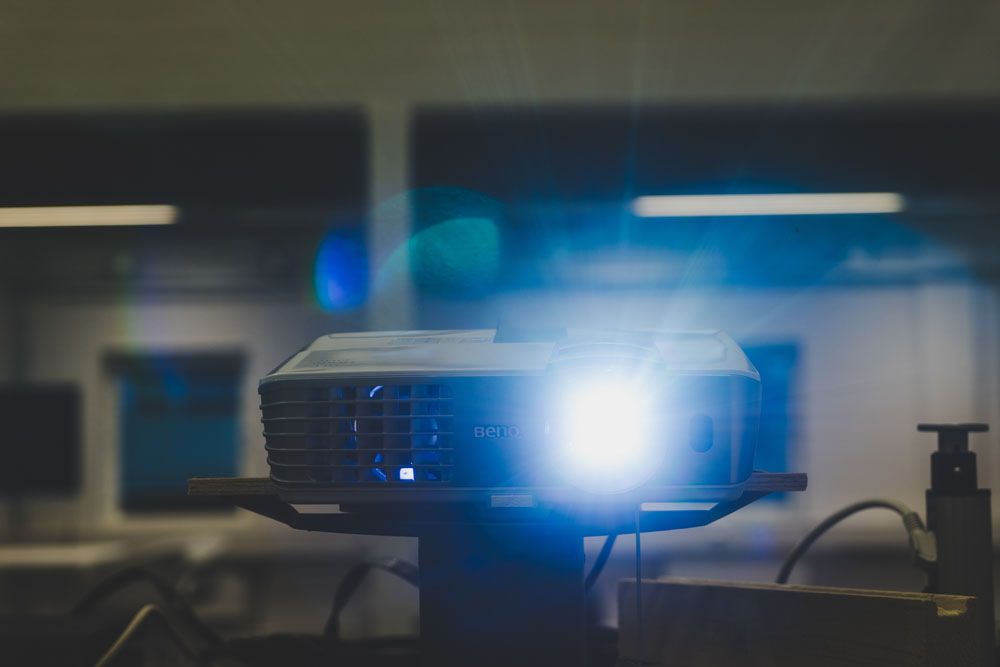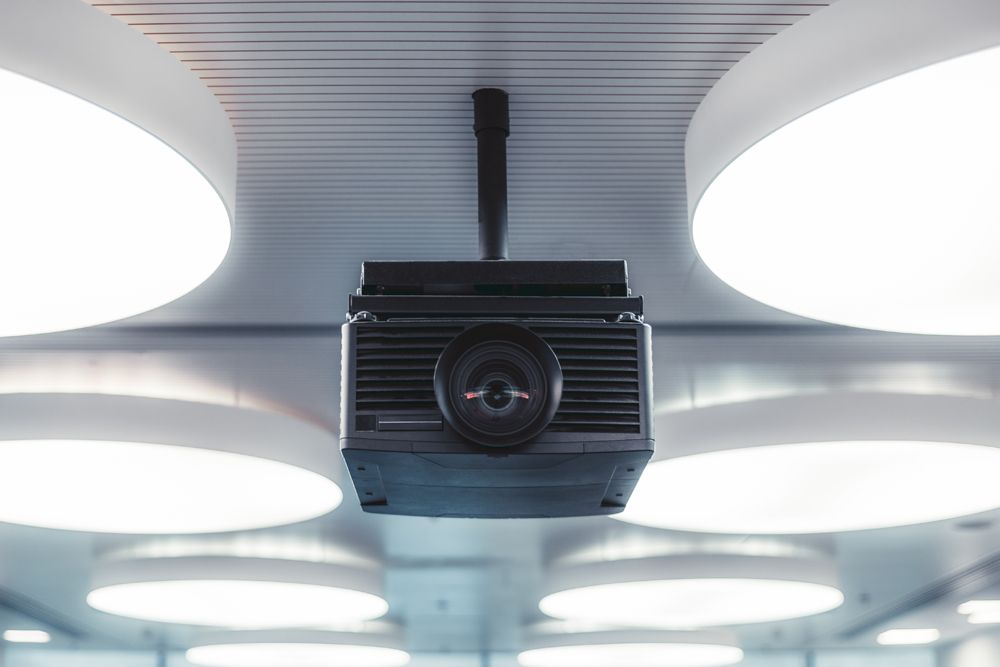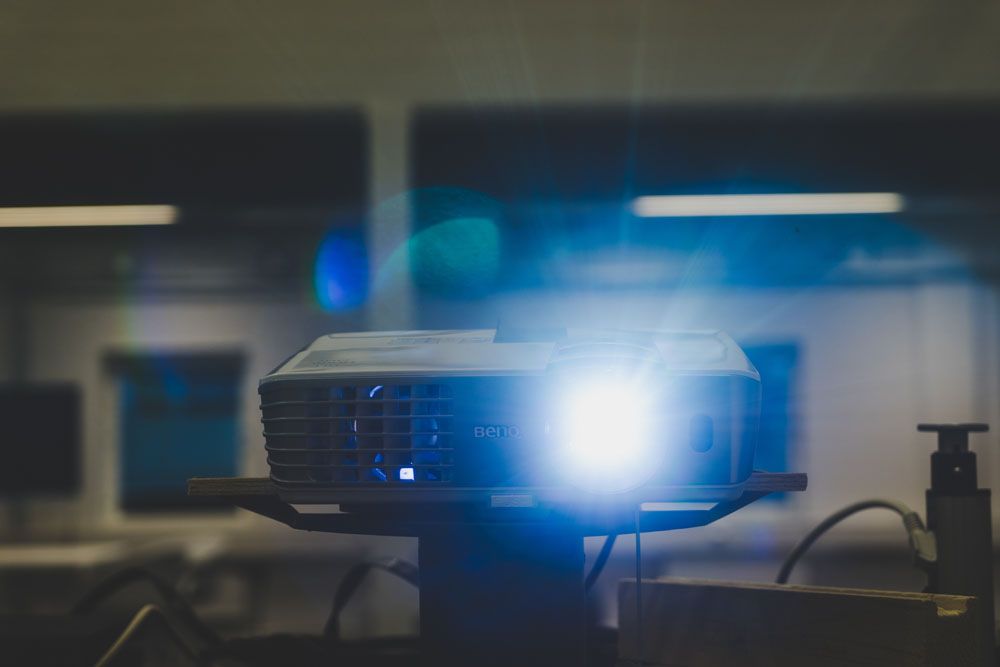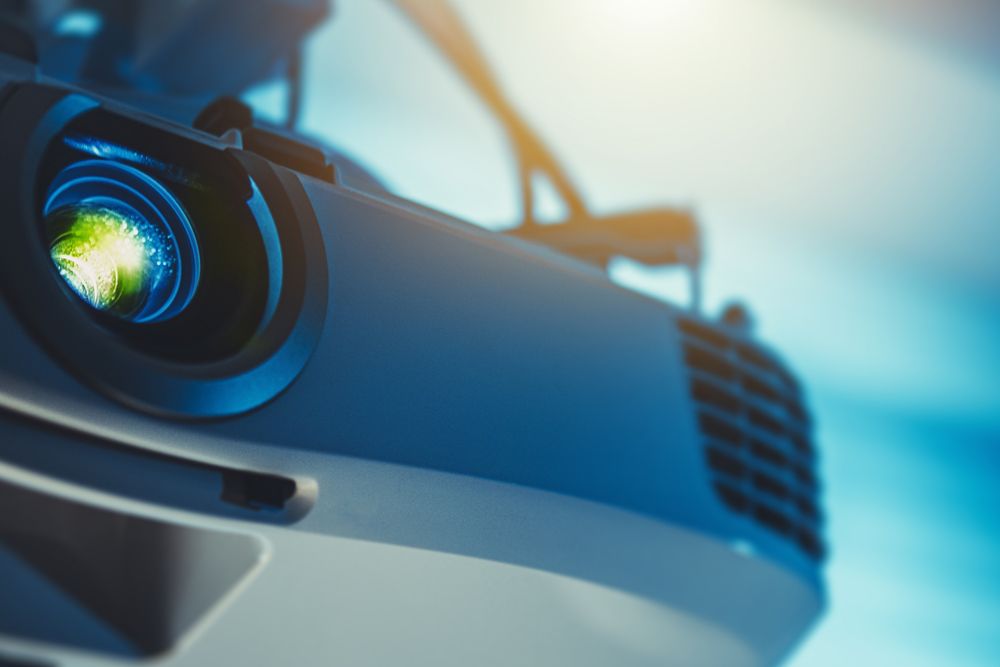A SUPPORTIVE GUIDE TO BUY THE RIGHT PROJECTOR
We will walk you through the features, simple tips and advanced technologies to check out before selecting a projector.

A Projector has become an indivisible part of home, schools, offices, and universities nowadays. One cannot visualize a presentation without the application of a projector. Almost in all presentation rooms, projectors are installed. The process of projecting images or things onto a display screen is nothing new. In simple words, a projector fundamentally takes up the projection of the operational principal of images, whereby the projector receives an image/video input, processes it with the support of its inbuilt optical projection system constituted by means of a lens as well as the optical source, and displays the improved output on the Projection screen. However, a projector can be considered as an upturned camera, emitting light out of a lens rather than getting the same. The task of purchasing a projector is not as easy as we think. A lot of awareness is to be collected from various sources before going to purchase your dream projector. Here we have furnished some valuable tips with an intention to help you while purchasing a projector of your choice.
Consider the use of the projector
While planning to purchase a projector, first you must think about the use of your projector. A projector can be used for various purposes. First, you must give importance to the application of the projector that you really want to carry out. Normally there are two types of projectors. Projectors used in home, and projectors used for business.
Projectors for home

For viewing cinema from your home, we suggest a projector having resolution 16: 9 format as almost all movies are available in this resolution format. Full HD projectors (1920 x 1080 pixels) provide this resolution, and have recognized themselves as the standard resolution magnitude for home cinema purposes. If you want to get improvement, a 4K projector (3840 x 2160 pixels) is the apt choice, if you can afford the cost. Some of the top quality full HD home movie projectors also provide 4K up scaling, such as the 4K enrichment technology. This points out that the 1080p panel is suitable to make the image quality better for a greater resolution. Nowadays, a reliable home cinema projector will be capable to offer 3D, and those at the higher end will also offer another vital feature called frame interpolation. This is an arrangement which adds more structure to your video producing with a very smooth image all through the swiftly moving scenes.
Projectors for business

We make a difference between transportable projectors for mobile use, and installation projectors which are used to keep in the meeting room. For escalating ceiling, the projector should have a suitable mounting system with automatic keystone rectification feature which is very helpful to pay off the deformation of the projector. Mobile devices should not possess above 3kg weight for easy transportation, and are generally found operational with internal speakers permitting you to offer presentations at any location. If the noise is not enough, you can typically connect an exterior loudspeaker which can be straight away linked to the laptop or projector via 3.5 mm jack or Bluetooth. Also focus on to devices having USB or SD card slots, if you want to provide files or presentations without having a PC or tablet to bring forth plug in. To attain maximum flexibility, a projector having WLAN capabilities is absolutely beneficial. If you possess an MHL-enabled tablet or Smartphone, an MHL-based projector will be a fascinating one for you. These arrangements can be directly connected to the mobile device by a cable to send content at the same time while charging the device.
Think about the required Brightness

The brightness of a projector is also known as light intensity, which is measured and displayed in ANSI lumens. It points out the quantity of light a projector can develop onto a particular surface. To decide the magnitude of light intensity, it is essential for you to pay attention to the environmental conditions especially the light in the room. If the surrounding light in the room is brighter, the projector must also be able to generate brighter light. Projection distance and image size are the important factors to be considered, since the brilliance of light which decreases simultaneously while travelling towards the screen.
Contrast
The contrast ratio depicts the disparity amidst the brightness of black and white. For the 1000:1 contrast ratio, the brightness of the brightest point is one thousand times more than the dark point considered for comparison. If the contrast of a projector is higher, the projected image will appear as sharper and more natural. The magnitude of the contrast values is dependent up on the environmental brightness, and the application of the projector. The contrast ratio is particularly very important for the home movie projectors to establish deep blacks. If you want to utilize your projector mostly in daylight or in artificial light, the contrast is not at all an imperative factor. Most projectors available today in the market offer a contrast ratio not less than 5000: 1.
Resolution
The resolution tells about the number of pixels that structure the image. If the pixel density is higher, the specification of the image will also be higher. The required resolution of your projector depends on the proposed use, and the quality of the input sources. In today's world, we are familiarized with the high-resolution content of modern PCs, TVs, and other models of displaying screens. Keeping this in mind we truly advise you to search a resolution not less than a ‘HD ready’. An HD Ready projector (1280 x 720 pixels) enables you to view DVDs on a big screen. For business presentations, the WXGA (1280 x 800) resolution is ideal, and at the same time it matches with the modern widescreen laptops. If you want a really crunchy picture for using with a Blu-ray player, you ought to get a Full HD projector having a resolution1, 920 x 1,080 pixels. On the other hand, a Full HD projector with PS4 or Xbox would be the ideal option for gamers. As now there are 4K projectors with a resolution of 3840 x 2160 pixels, Full HD is not the ultimate choice, in the upscale home cinema section.
Noise level of a projector
In a projector, the role of noise can be a minor or major one, in accordance with its application. For a presentation in a small room or viewing dedicated home cinema, your projector should not be more than 30 dB. If the projector is large, generally there won’t be much noise. Hence, home cinema projectors with a big framework will normally generate considerably lower fan noise, which is generally less than 30 dB. On the other hand, a small, portable projector will be a bit louder, since the magnitude of the noise comes in between 32 and 38dB. The essential brightness of the unit usually plays an important role. If the projector is brighter, the production of noise will be louder, as the more potent lamp needs supplementary cooling.
Technology
The working of the projectors is relying on diverse technologies.



DLP
Digital Light Processing (DLP) is a projection technology where millions of small mirrors that project the light onto the screen generate the image. Each mirror corresponds to a light point whose tilting movement is invisible to the naked eye, and offers a variety of the color dividing process.
LCD
In Liquid Crystal Display (LCD) projection technology, the white light from the projector lamp is split into three basic colors such as blue, green, and red, and travelled through three individual LCD panels. In this manner, an identifiable color image is created.
D-ILA, LCoS and SXRD
This technology is referred by different names by different manufacturers. JVC call it Direct-Drive Image Light Amplification (D-ILA), Canon’s referring term is Liquid Crystal on Silicon (LCos), and Sony terms it as Silicon X-tal Reflective Display (SXRD). Working of all the three technologies are based on the identical theory.
Useful features
With respect to the application, the projector possesses some specific features.
Optical zoom
For getting greater flexibility in home cinema projectors 2x zoom can be used. This feature is also helpful, if the projector cannot be installed at the most favorable distance of the display region.
Lens shift
This feature of the projector supports to move the image vertically and horizontally without any alteration. Lens shift is also useful if the projector cannot be located directly in front of the vicinity of the display.
Keystone correction
Depress the keystone buttons to regulate the image at the top until the trapezoidal alteration is compensated. This application is also useful to give off a sloping projection, and to bring the image straight.
Conclusion
If you have any plan to buy a projector that meets your requirements, kindly go through the aforementioned words of guidance. If you are aware of the features that your projector should have, it will be easy for you to find out the right choice. The furnished guidance will allow you to filter projectors by certain criteria, and hopefully support to pick the ideal projector for your utmost needs.
However, remember to choose the projector which comes within your predetermined budget. Also go through the offers online and in store before choosing the perfect projector that meets your needs.